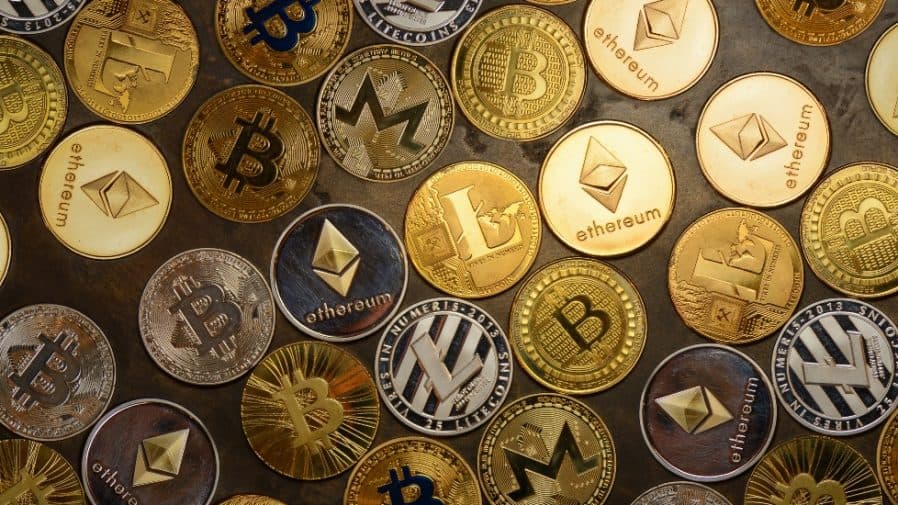
If you’ve been following the news, you undoubtedly know a few things about Bitcoin right now.
One: It’s a cryptocurrency.
Two: One Bitcoin is worth more than $40,000 in U.S. dollars, although the price fluctuates wildly day to day.
Three: Electric vehicle manufacturer Tesla recently invested in Bitcoin and announced it would soon allow people to purchase its cars using the cryptocurrency.
But, if you’re like many people, you’re still fuzzy on a few things, including exactly what cryptocurrency is, how it works and if it’s a safe way to invest your money.
How exactly to categorize Bitcoin is a matter of controversy. Is it a type of currency, a store of value, a payment network or an asset class?
Fortunately, it’s easier to define what Bitcoin actually is. It’s software. Don’t be fooled by stock images of shiny coins emblazoned with modified Thai baht symbols. Bitcoin is a purely digital phenomenon, a set of protocols and processes. There is no physical gold that can ever be exchanged for bitcoin; there are only Bitcoins created because computers work together so efficiently these days. That makes this thing easy — just ask eBay sellers! However we should understand one word next time someone tells us they got “that real estate guy” (or any other dumb-sounding term) telling them their cash was at 90 percent plus interest rates when he meant 45 percent as opposed where everything started over 30 years ago. Yes…the name sounds silly but those guys aren´d even trying to fool anybody into thinking anything resembling normal banknotes come preloaded onto modern electronic wallets.. Just stop pretending anyone thinks actua
History of Bitcoin
Bitcoin was invented in 2009 as a form of digital currency. Unlike paper money or debit cards, which represent paper money the buyer holds in a bank, Bitcoin has no physical form. It’s all stored digitally, providing increased security over checks, paper money transactions and even other digital transactions, which, again, represent the exchange of paper money held in accounts.
As of Monday morning, Bitcoin’s value sits at $47,794, up approximately 20% since last week, according to Reuters. For perspective, in 2010, a single Bitcoin was worth only 8 cents in USD, Investopedia writes. With each coin rising by 1.3%, more than doubling its market value within 4 months, it is quickly becoming one’s most sought-after asset class!
The Blockchain
Bitcoin is a network that runs on a protocol known as the blockchain. A 2008 paper by a person or people calling themselves Satoshi Nakamoto first described both the blockchain and Bitcoin and for a while the two terms were all but synonymous.
The blockchain has since evolved into a separate concept, and thousands of blockchains have been created using similar cryptographic techniques. This history can make the nomenclature confusing. Blockchain sometimes refers to the original, Bitcoin blockchain. At other times it refers to blockchain technology in general, or to any other specific blockchain, such as the one that powers Ethereum. Each label could be mistaken at face value if read too broadly. As an example: you would not know which version was used during most transactions made between 2011-2015 due only to its appearance alongside many versions within bitcoin itself. In 2017 however, cryptocurrency users began moving away from referring specifically with names like “blockchain,” because this term appears often (see illustration). To avoid confusion about whether blocks are public or private, we looked up definitions online; here’s what they said about each word:
The basics of blockchain technology are mercifully straightforward. Any given blockchain consists of a single chain of discrete blocks of information, arranged chronologically. In theory, any type of contract between two parties can be established on a blockchain as long as both parties agree on the contract. This takes away any need for a third party to be involved in any contract. This opens a world of possibilities including peer-to-peer financial products, like loans or decentralized savings and checking accounts, where banks or any intermediary is irrelevant.
While Bitcoin’s current goal is a store of value as well as a payment system, there is nothing to say that Bitcoin could not be used in such a way in the future, though consensus would need to be reached to add these systems to Bitcoin. If transactions were fully secure through smart contracts which run alongside other security features then one may easily imagine an economy based upon those same rules (think credit card companies using Blockchain technologies).
Alternatively another avenue towards utilizing cryptocurrencies has been discussed by prominent academics: blockchains allow transaction time frames beyond days & months rather than weeks. These timeframes imply greater efficiency; more efficient data processing power per unit of money available with less effort required because each individual person gets equal access – allowing their digital wallets become much bigger files compared so many smaller ones stored under multiple layers of storage all over the Internet today.
Understand Why Crypto Is So Risky
Although your crypto investment is likely “secure,” that doesn’t mean it’s “safe” by any means. There are two elements that make cryptocurrency riskier than holding cash in a bank account: market volatility and lack of federal insurance and regulation.
When you hold your money in a bank account, it is FDIC-insured for up to $250,000 per depositor, per account class, per bank. That means if you have your own checking account with $100,000 in it, a savings account with $50,000 in it and a CD with a $100,000 investment, all within a single FDIC-insured bank, your funds are all protected by the Federal Deposit Insurance Corporation. If your bank goes out of business, you will not lose your money.
